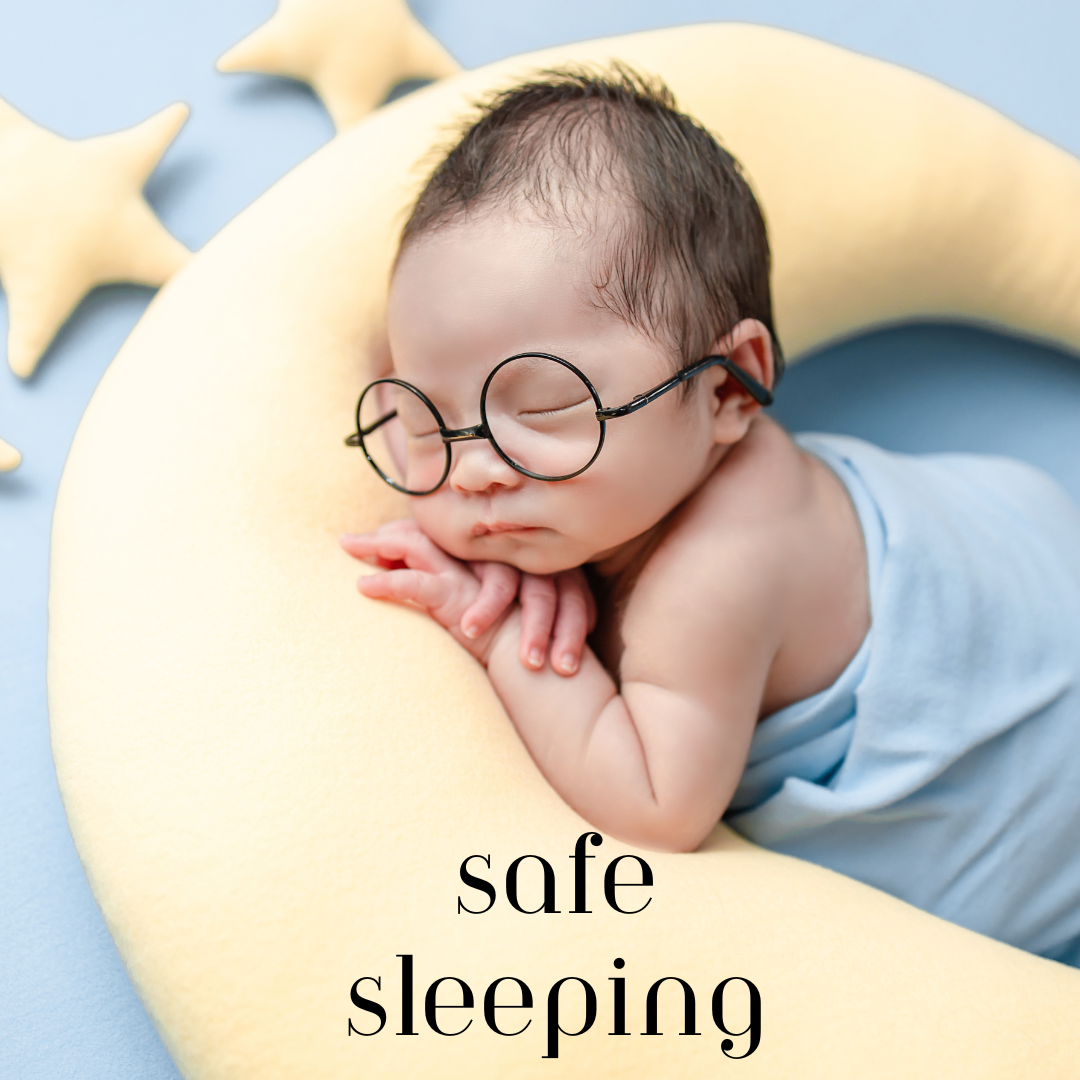A Comprehensive Guide
Ensuring a safe sleeping environment for your baby is crucial in the first year of life. This period is one of rapid growth and development, and adopting safe sleep practices can significantly reduce the risk of Sudden Infant Death Syndrome (SIDS) and other sleep-related dangers. Here’s a guide to safe sleeping techniques for babies aged 0-1.
1. Place Baby on Their Back to Sleep
Always place your baby on their back for every sleep time, including naps. This position significantly lowers the risk of SIDS. Ensure that this practice continues until your baby is at least one year old, or until they can independently roll over both ways.
2. Use a Firm Sleep Surface
Choose a firm mattress that fits snugly in the crib or bassinet without any gaps. Soft surfaces like soft mattresses, pillows, and quilts should be avoided as they can increase the risk of suffocation.
3. Keep the Sleep Area Bare
Keep the crib free from loose bedding, toys, and bumper pads. Use a fitted sheet on the mattress, and dress your baby in a sleep sack or wearable blanket to keep them warm. Avoid using blankets, as they can pose a risk of suffocation or overheating.
4. Share the Room, Not the Bed
It is recommended that babies sleep in the same room as their parents, but not in the same bed. Room-sharing without bed-sharing allows for easier nighttime feeding and comforting while minimizing the risk of SIDS.
5. Avoid Overheating
Keep the room at a comfortable temperature, ideally between 68-72°F (20-22°C). Dress your baby appropriately for the room temperature, and avoid using too many layers or heavy clothing that might cause overheating.
6. Use a Pacifier
Offering a pacifier at nap time and bedtime can help reduce the risk of SIDS. If breastfeeding, wait until breastfeeding is well-established before introducing a pacifier. If the pacifier falls out of the baby’s mouth during sleep, it’s not necessary to reinsert it.
7. Ensure Proper Sleeping Environment
Make sure the crib or bassinet meets current safety standards. It should have slats no more than 2-3/8 inches apart and be free from any loose or broken parts. Avoid placing the crib near windows, cords, or other potential hazards.
8. Encourage Tummy Time While Awake
While babies should always be placed on their backs to sleep, tummy time while they are awake is crucial for their development. It helps strengthen their neck and shoulder muscles and promotes motor skills.
9. Regular Check-Ins
Even with all safety measures in place, it’s a good practice to check on your baby regularly while they sleep. This ensures that they are comfortable and that their sleep environment remains safe.
10. Follow Safe Sleep Recommendations
Stay updated with the latest safe sleep guidelines from reputable sources such as the American Academy of Pediatrics (AAP). Recommendations may evolve, so it’s important to be informed about the best practices.
By following these safe sleeping techniques, you can create a secure sleep environment for your baby and reduce the risk of sleep-related dangers. Prioritizing these practices not only enhances your baby’s safety but also promotes better sleep for the entire family.

